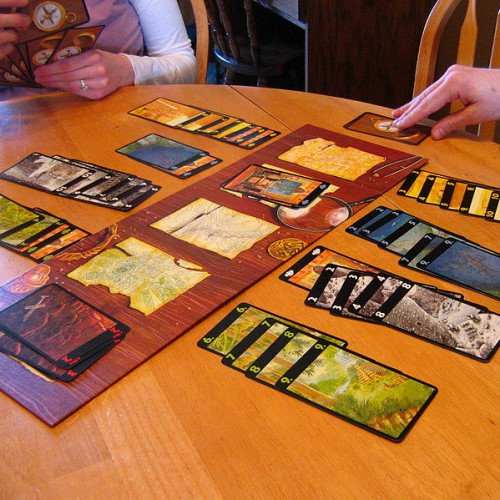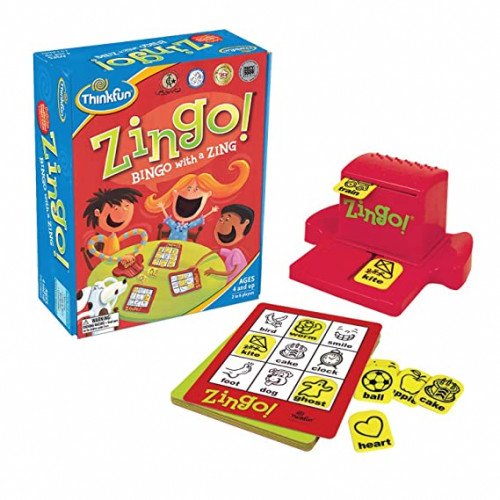LOST CITIES VS ZINGO!

LOST CITIES
Lost Cities is a 60-card card game, designed in 1999 by game designer Reiner Knizia and published by several publishers. The objective of the game is to mount profitable expeditions to one or more of the five lost cities (the Himalayas, the Brazilian Rain Forest, the Desert Sands, the Ancient Volcanos and Neptune's Realm). The game was originally intended as a 2-player game, but rule variants have been contributed by fans to allow 1 or 2 further players, causing Reiner Knizia himself to later provide semi-official 4-player rules. Lost Cities is a fast-moving game, with players playing or discarding, and then replacing, a single card each turn. Cards represent progress on one of the five color-coded expeditions. Players must decide, during the course of the game, how many of these expeditions to actually embark upon. Card-play rules are quite straightforward, but because players can only move forward on an expedition (by playing cards which are higher-numbered than those already played), making the right choice in a given game situation can be quite difficult. An expedition that has been started will earn points according to how much progress has been made when the game ends, and after three rounds, the player with the highest total score wins the game. Each expedition that is started but not thoroughly charted incurs a negative point penalty (investment costs). Interaction between players is indirect, in that one cannot directly impact another player's expeditions. However, since players can draw from the common discard piles, they are free to make use of opposing discards. Additionally, since the available cards for a given expedition are finite, progress made by an opponent in a given color can lead to difficulty making progress in that same color. The game's board, while designed to supplement the theme, is optional and consists only of simple marked areas where players place discards. If Lost Cities had four expeditions instead of five, it could be played with a standard deck of playing cards. When doing so, the face cards would represent investment cards, with numbered cards two through ten serving as the expedition progress cards.
Statistics for this Xoptio

ZINGO!
Zingo! is a game inspired by Bingo released by ThinkFun in 2002. Players try to fill their Zingo! cards with matching tiles from the Zingo! "Zinger". In the game, the dealer slides the Zinger to reveal two tiles at a time. When a player sees a tile that matches a picture on his/her board, he calls out the name of the object and places that tile on the matching space on their board. If two players have that tile, the person who calls out the name of the object first gets the tile. The first player to fill his card wins. The Zingo cards allow for more or less competitive play. The green sides have less images in common with the other 7 boards and are therefore more relaxed and less competitive. The green sides, however, have many of the same images and make for more intense games between players.